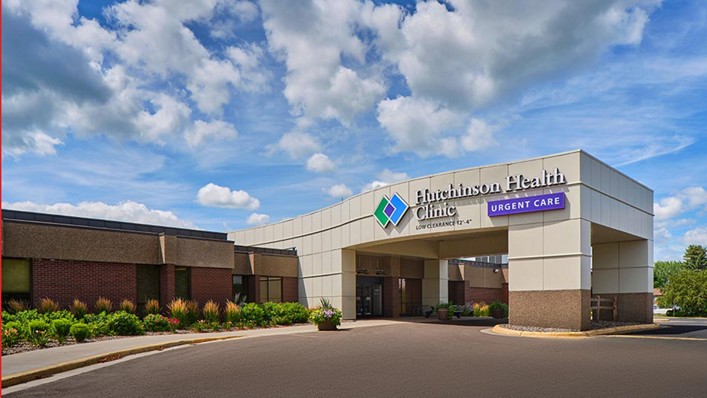Understanding the Duty of Urgent Treatment in Giving Timely Therapy for Non-Life-Threatening Problems
Immediate care facilities have arised as an important part of the medical care landscape, resolving the instant demands of clients with non-life-threatening problems. Understanding the subtleties of immediate treatment might significantly affect patient end results and the general efficiency of health care distribution.
What Is Urgent Care?
Immediate care describes a category of medical solutions made to deal with non-life-threatening problems that require instant focus. These facilities work as an intermediary in between medical care physicians and emergency areas, offering a practical choice for clients that need timely care without the considerable waiting times normally connected with emergency situation departments.
Urgent care centers are normally staffed by medical experts, consisting of medical professionals, registered nurse specialists, and doctor aides, who are trained to diagnose and treat a large variety of problems. Typical solutions offered by these centers consist of treatment for small injuries, illnesses, and infections, along with analysis examinations such as X-rays and research laboratory job.
In addition, immediate treatment centers frequently approve walk-in clients, removing the demand for consultations. In general, immediate treatment plays a vital function in the medical care system, ensuring patients can access essential medical solutions promptly and efficiently.

Many individuals might find themselves unclear regarding when to seek treatment at an immediate care facility instead of a health care medical professional or an emergency clinic. Immediate care is designed to address non-life-threatening problems that call for prompt focus but are not extreme sufficient to warrant an emergency situation room browse through.
Generally, one should think about urgent care for concerns such as minor cracks, sprains, cuts requiring stitches, or infections like urinary system infections. Furthermore, cool or influenza signs and symptoms, breakouts, and allergies can also be suitably taken care of in this setup.
It is very important to note that urgent care is not ideal for life-threatening emergency situations, such as chest discomfort, difficulty breathing, or extreme bleeding, which demand instant emergency area intervention.
Individuals that do not have accessibility to a primary care doctor or can not safeguard a timely appointment may additionally gain from immediate treatment solutions. Ultimately, recognizing when to make use of immediate care can lead to a lot more efficient healthcare shipment, enabling individuals to obtain the appropriate level of treatment based on their details wellness demands.
Advantages of Urgent Treatment Centers
Choosing urgent treatment facilities for non-life-threatening conditions provides several advantages that enhance client experience and availability. One key advantage is the minimized delay times compared to conventional emergency spaces. Urgent treatment facilities usually operate a first-come, first-served basis, allowing clients to receive prompt medical focus without the lengthy hold-ups usually linked with medical facility settings.
In addition, urgent treatment centers provide extensive hours, consisting of weekends and evenings, suiting clients with varying routines. This adaptability makes sure that people can seek treatment when it is most convenient for them, better advertising prompt intervention.

Additionally, these facilities commonly supply a thorough variety of services, including analysis tests and minor treatments, all under one roofing. This loan consolidation of solutions not only improves the patient experience however additionally promotes a more natural method to taking care of non-life-threatening wellness problems, ultimately profiting total individual end results.
Usual Problems Dealt With
At immediate care facilities, a variety of non-life-threatening problems can be efficiently dealt with, providing patients with prompt and accessible medical aid. These centers are especially experienced at dealing with concerns that need punctual attention however do not present an instant threat to life or arm or leg.
Usual problems treated at urgent treatment facilities include small injuries such as pressures, strains, and cracks. Urgent care centers are geared up to carry out essential analysis examinations, such as X-rays and lab tests, allowing them to provide extensive care.
Additionally, urgent navigate to these guys care suppliers can carry out inoculations, assisting to stop the spread of contagious diseases - Urgent Care. They also supply solutions for small procedures, such as suturing wounds or draining abscesses. By offering these varied services, urgent treatment facilities play an essential duty in linking the gap in between key care and emergency situation services, guaranteeing patients obtain timely treatment for a large range of conditions without the requirement for long haul times generally associated with emergency situation spaces
How Urgent Care Sustains Health Care System
Urgent treatment facilities play an important role in supporting the overall health care system by relieving the worry on emergency situation divisions and giving prompt browse this site access to healthcare for non-life-threatening conditions. By taking care of cases such as small injuries, infections, and health problems, immediate treatment facilities permit emergency departments to concentrate on more critical clients calling for immediate interest.
In addition, urgent treatment facilities improve medical care access, providing prolonged hours and an easier alternative to typical health care settings. This access is particularly beneficial for people who may not have a routine doctor or who need immediate treatment outside of normal workplace hours. Therefore, urgent care facilities effectively decrease wait times and enhance person complete satisfaction.
In addition, immediate treatment centers add to set you back financial savings for both people and the healthcare system by offering lower-cost solutions compared to emergency divisions. This economic efficiency is crucial in a period of increasing medical care prices, allowing clients to receive required care without incurring inflated expenditures.
Verdict
In verdict, immediate treatment facilities play an essential role in the medical care system by providing punctual treatment for non-life-threatening conditions. By bridging the void in between main treatment and emergency situation spaces, these facilities guarantee that clients receive prompt clinical focus without the prolonged wait times usually connected with emergency departments. The ease of access and efficiency of immediate treatment facilities contribute dramatically to relieving the total problem on health care resources, enhancing client outcomes, and advertising a much more effective medical care shipment system.
Urgent care facilities have emerged as an important component of the health care landscape, dealing with the prompt requirements of patients with non-life-threatening problems. Immediate care gos to generally sustain reduced out-of-pocket costs compared to emergency situation division gos to, making treatment much more affordable for individuals without jeopardizing top quality. Urgent care facilities are furnished to execute needed diagnostic tests, such as X-rays and research laboratory tests, allowing them to offer comprehensive care.
By using these diverse solutions, urgent care facilities play a crucial function in bridging the space between key care and emergency situation services, making sure patients get prompt therapy for a wide array of conditions without the need for long delay times normally associated with emergency spaces.
In addition, immediate care facilities improve medical care ease of find out access, using extended hours and an extra hassle-free alternative to standard main treatment setups.